Activity
Explore the Senses with a Sensory Table!
It's a place designed for squishing, sifting, sorting, digging and pouring, where children can get messy, discover, and play freely. It's a sensory table. And almost every preschool has one. Now you can duplicate this sensory stimulation device at home, too!
Grade:
Subjects:
English Language Arts
Science
Handwriting
Life Science
Engineering and Science Inquiry
Observations and Data Collection
Thank you for your input.
What You Need:
- Large, shallow, plastic tub
- Table
- Bath towel
- Rags
- Handheld brush and dustpan
- Sensory tools outlined below
The following are some great fillers with which to begin:
Water
- Add soap to wash plastic dolls or dishes
- Add food coloring to experiment with color mixing
- Add assorted items to experiment with floating and sinking
- Add small plastic or rubber fish and a handheld net
Food
- Jell-O
- Noodles
- Dry instant mashed potatoes
- Cornmeal (makes a great sand substitute)
Easter grass with plastic insects and butterflies
Grains
- Birdseed
- Rice
- Cereal
- Oatmeal
Office Extras
- Shredded paper
- Foam packing peanuts
- Colored paper clips
Assorted leaves, twigs, grass, and magnifying glasses
Household Items
- Cotton balls, buttons
- Shaving cream (In winter, add trucks to plow snowy roads in the table!) If your child's learning the alphabet, help her trace letters in the shaving cream.
Magnets with a random assortment of metal objects to "catch"
What You Do:
- To duplicate this learning opportunity at home, place a large, shallow plastic tub (the kind meant for storage under beds work great!) on an existing table, hard-surface floor or outside on the ground.
- Spread a large bath towel underneath to catch any overflow. Keep rags, a handheld brush and a small dustpan nearby so your child can clean up as independently as possible.
- Add whatever equipment your child enjoys from the above list of suggestions. Get creative when adding to it! Even plain, old plastic cups can be fun.
- When you have a specific goal in mind, such as helping your child sort different colored buttons, let them play alone first, then step in later. In most cases, given time to explore independently, a child will discover the concepts you want them to understand.
- If you want, they can help make lists (for example, of which items sink and which float) or talk to you about thier observations. Or they can just discover without the need to explain. Let your child explore and get dirty, and above all, have fun!
Related learning resources

Exploring a Table of Contents
Worksheet
Exploring a Table of Contents
This worksheet provides a sample table of content and comprehension questions to go along with them to help kids practice.
1st Grade
Worksheet
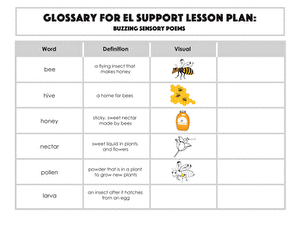
Glossary: Buzzing Sensory Poems
Worksheet
Glossary: Buzzing Sensory Poems
Use this glossary with the EL Support Lesson Plan: Buzzing Sensory Poems.
Kindergarten
Worksheet
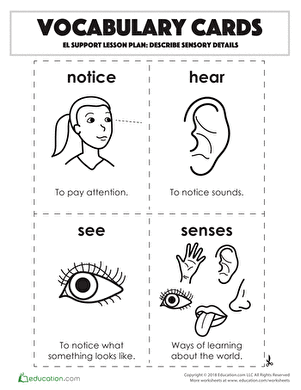
Vocabulary Cards: Describe Sensory Details
Worksheet
Vocabulary Cards: Describe Sensory Details
Use these vocabulary cards with the EL Support Lesson: Describe Sensory Details.
1st Grade
Worksheet
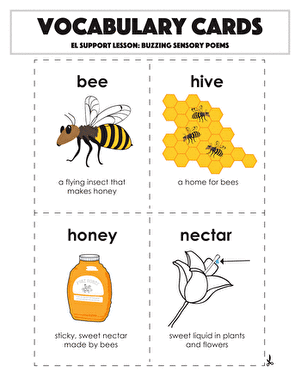
Vocabulary Cards: Buzzing Sensory Poems
Worksheet
Vocabulary Cards: Buzzing Sensory Poems
Use these vocabulary cards with the EL Support Lesson: Buzzing Sensory Poems.
Kindergarten
Worksheet
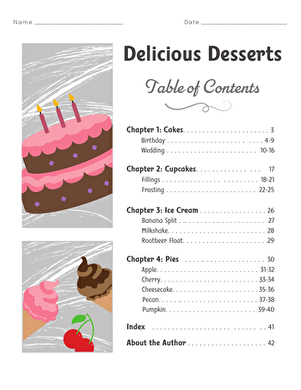
Table of Contents
Worksheet
Table of Contents
Help your little bookworm get to know the layout of a table of contents! Learners deconstruct this sample table of contents by answering the questions.
1st Grade
Worksheet
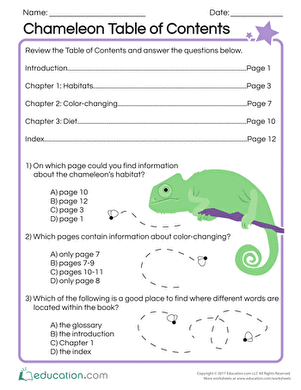
Chameleon Table of Contents
Worksheet
Chameleon Table of Contents
Young readers will practice using a table of contents to find information and answer questions about chameleons.
2nd Grade
Worksheet
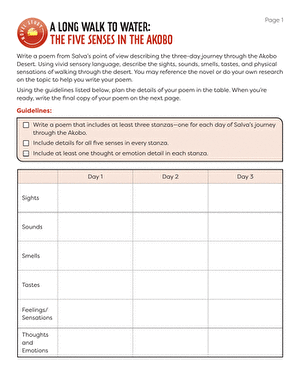
Novel Study: A Long Walk to Water: The Five Senses in the Akobo
Worksheet
Novel Study: A Long Walk to Water: The Five Senses in the Akobo
After reading Linda Sue Park's novel A Long Walk to Water, give students an opportunity to engage with the book and their senses in this poetry-based extension activity!
7th Grade
Worksheet

Table of Contents Mystery #1
Worksheet
Table of Contents Mystery #1
Practice using a table of contents to find information and answer questions using this handy worksheet.
2nd Grade
Worksheet

Table of Contents Mystery #2
Worksheet
Table of Contents Mystery #2
Practice using a table of contents to find information and answer questions using this handy worksheet.
2nd Grade
Worksheet
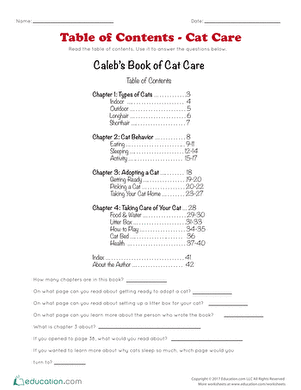
Table of Contents - Cat Care
Worksheet
Table of Contents - Cat Care
Learning about text features, such as Table of Contents, is an important part of learning how to read.
Kindergarten
Worksheet
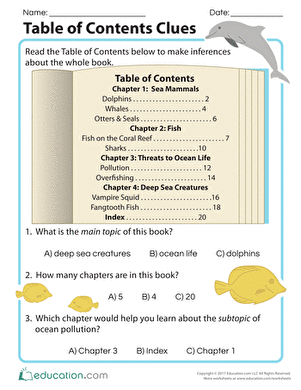
Table of Contents Clues
Worksheet
Table of Contents Clues
Your little bookworm will practice using a table of contents to find information and answer questions about the whole book.
2nd Grade
Worksheet
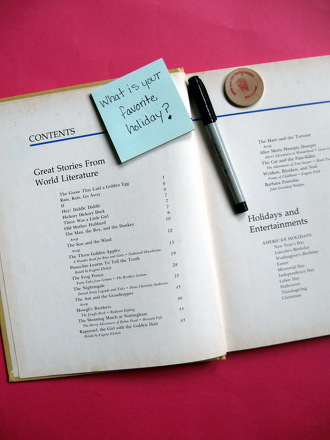
Table of Contents Treasure Hunt
Activity
Table of Contents Treasure Hunt
Send your child on a table of contents treasure hunt to help build basic research skills! Navigating a book is a skill that is sure to come in handy later on.
2nd Grade
Activity
See this activity in a set:
Simple But Fun: 8 Preschool Activities for Sorting & Categorizing



